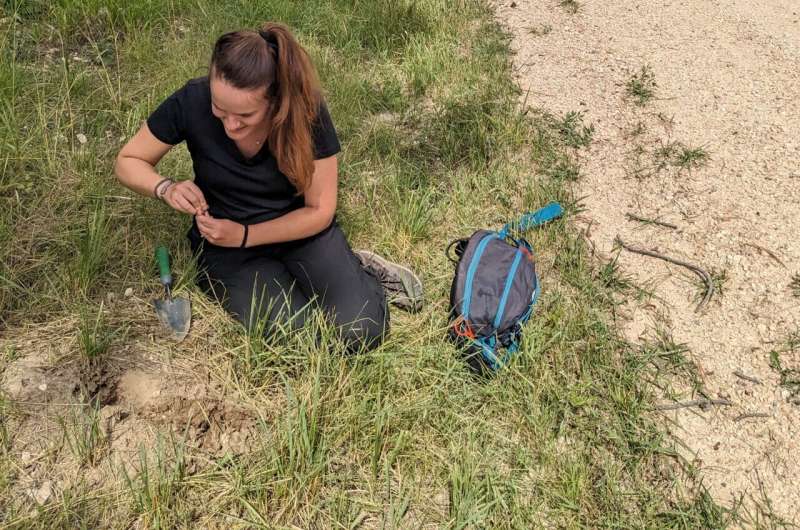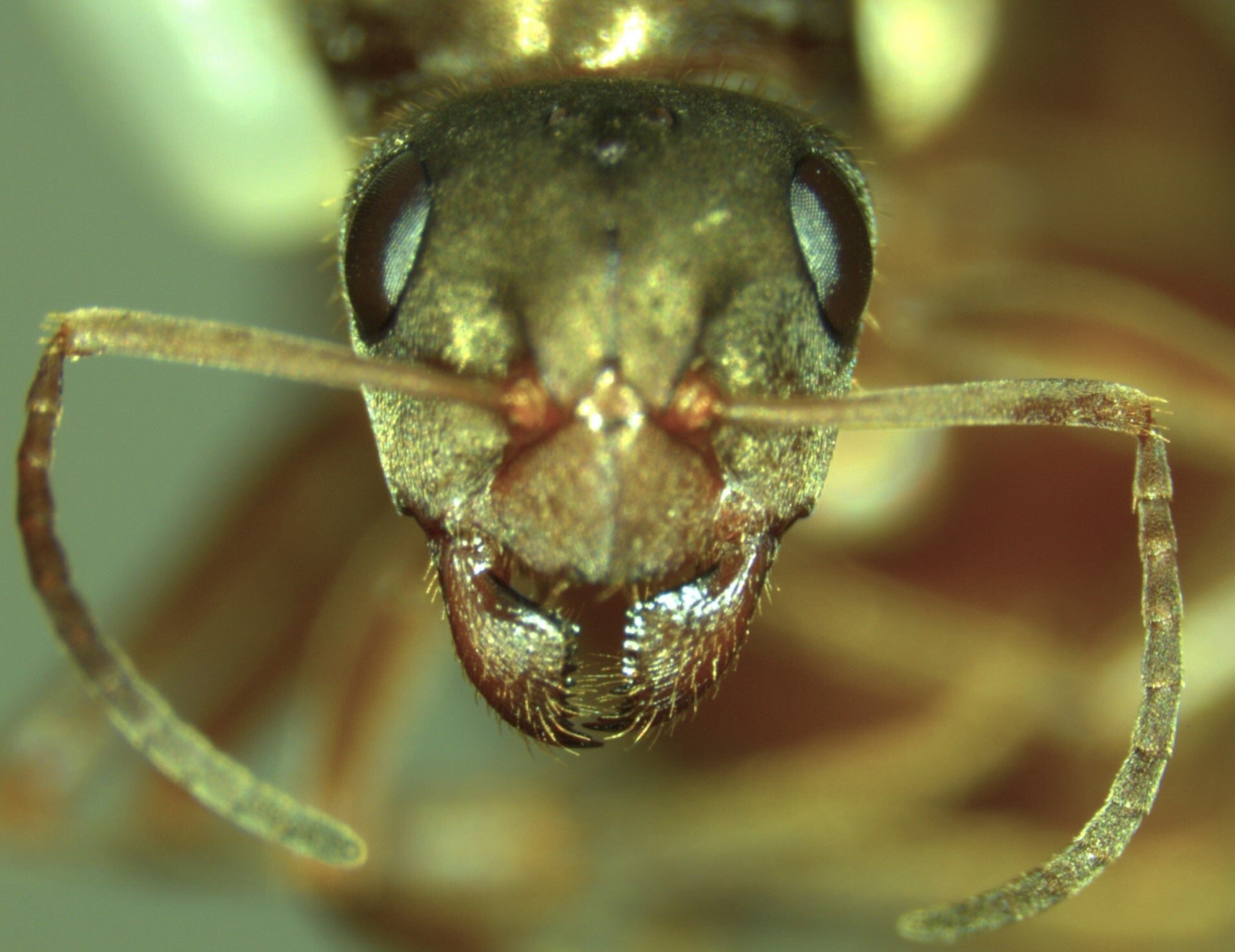An ant colony is sustained through complex social dynamics, with each member—the queen, males and workers (sterile females)—contributing to the greater community. Some species add complexity to this dynamic with the addition of rather small queens.
Researchers at UC Riverside tackled why these additional queens are present by focusing on complex genetic structures, called supergenes, in the community. These supergenes control the origin and duplication of the petite queens in one ant species. The results of their study are available in the December issue of the journal Current Biology.
“We were intrigued by the tiny queens,” said senior author Jessica Purcell, associate professor in the Department of Entomology at UCR. “It’s a great system (multiple-queen ant colonies) to study the evolution of supergenes, which exist in many types of organisms.”
Supergenes vary in size but consist of a cluster of genes on the same chromosome that are linked. The supergene suppresses recombination—a common shuffling of genes during cell division—and transmits and preserves the architecture of the supergene from generation to generation. These mega genes are associated with traits, or phenotypes, expressed by many organisms, including migratory patterns in fish and birds and the number of queens in an ant colony.
While not common in all ant colonies, Purcell and her colleagues focused on the small queens in one ant species, Formica cinerea, which is common throughout Europe, spanning from Spain to western Siberia and from Scandinavia to the Balkans. These ants are beneficial, happily spending their days munching on spiders, mites and even sugary aphid poop.
The research team identified the presence of two supergenes that increase the colony queen count and control queen size.
The queen is the most important and largest ant in the colony. The queen has wings and can fly away, but her primary role is to lay eggs to grow generations of workers, males, and her successor. Workers live for about six months and spend their time foraging for food and caring for the brood. Males have a shorter lifespan; they rarely leave the colony and mate once with a future queen.
Tiny queens obtain their power from a supergene that formed about 23 million years ago and determines whether colonies have one queen or multiple queens. The researchers found another supergene responsible for ant size. The two supergenes together produce additional queens that are 20% smaller than a typical ant queen.

This pairing can have a considerable effect on the colony.
“Ants are social insects and create huge colonies where nestmates are related to each other, and colonies works well together to raise their relatives,” said Giulia Scarparo, an entomology post-doctoral student and first author of the study. “In a polygyne (multiple queen) colony, the relationship between nestmates is lower. The presence of many unrelated nestmates can lead to reproductive conflicts among workers. “
The researchers suggest the conflicts that arise from these combined supergenes may help the colony expand and survive.
Establishing an independent colony requires the queen to fly to a new location and use her body reserves housed in the wing muscles and body fat to raise the first brood of workers. This strategy is risky and can lead to the death of the queen, and with her the colony.
Tiny queens lack the energy reserves to establish a new colony, but they can join existing colonies. This raises new questions to consider regarding the ongoing cooperation among groups who are not genetically related.
“The discovery of supergenes associated with microgynes (small queens) is the first discovery of this type,” said Scarparo. “We think these kind of queens can be socially parasitic—social insects that take advantage of other social insects. Microgynes could be a good starting point to understand the evolution of social parasitism, and we may have a supergene driving this lifestyle.”
Purcell and Scarparo were joined on this project by Alan Brelsford, an assistant professor of biology, and Marie Palanchon, a graduate student in Purcell’s lab.
The article is titled “Social antagonism facilitates supergene expansion in ants.”
More information:
Giulia Scarparo et al, Social antagonism facilitates supergene expansion in ants, Current Biology (2023). DOI: 10.1016/j.cub.2023.10.049
Citation:
Supergene research solves the mystery of tiny ant queens (2024, March 28)
retrieved 28 March 2024
from https://phys.org/news/2024-03-supergene-mystery-tiny-ant-queens.html
This document is subject to copyright. Apart from any fair dealing for the purpose of private study or research, no
part may be reproduced without the written permission. The content is provided for information purposes only.

